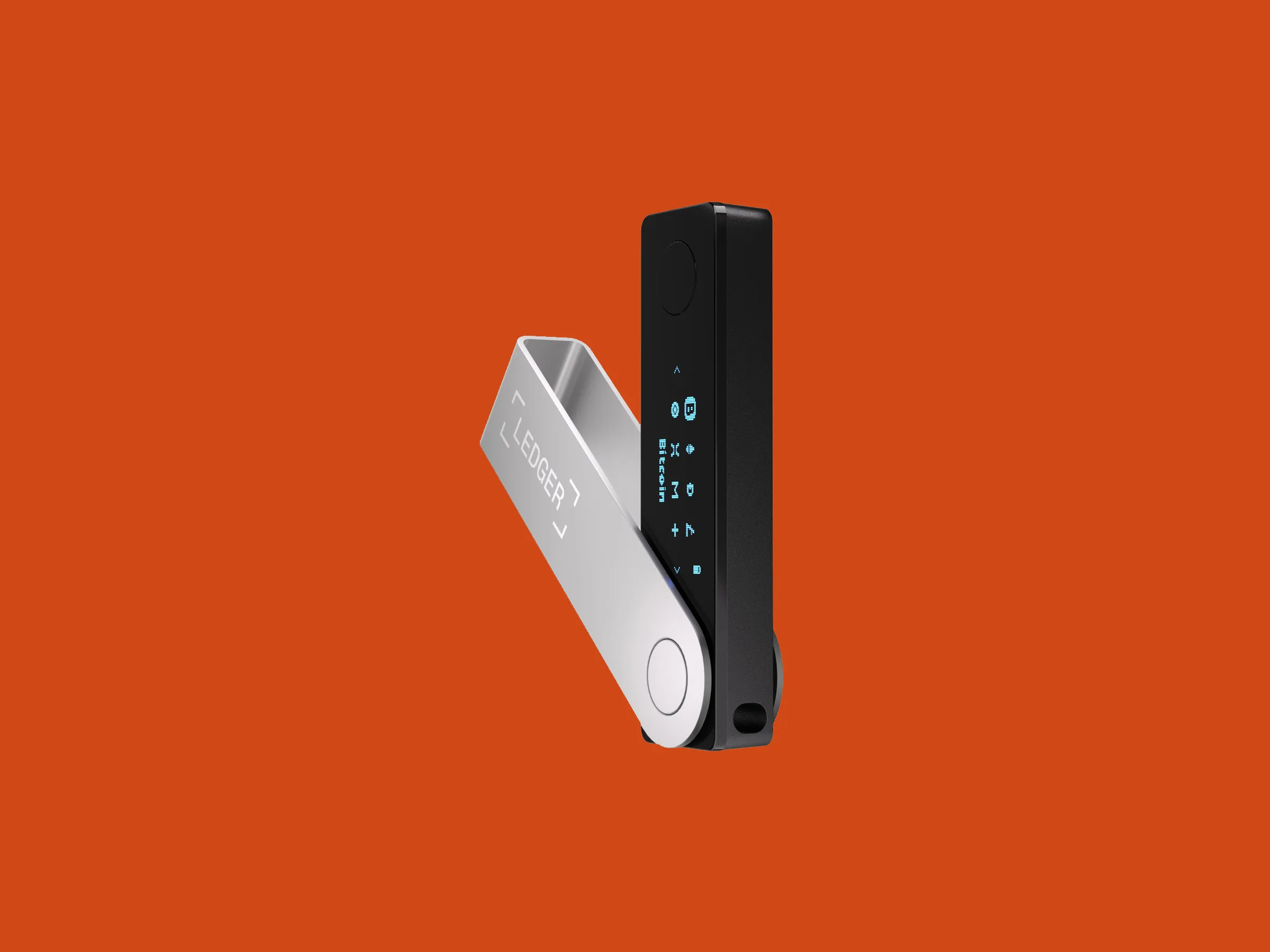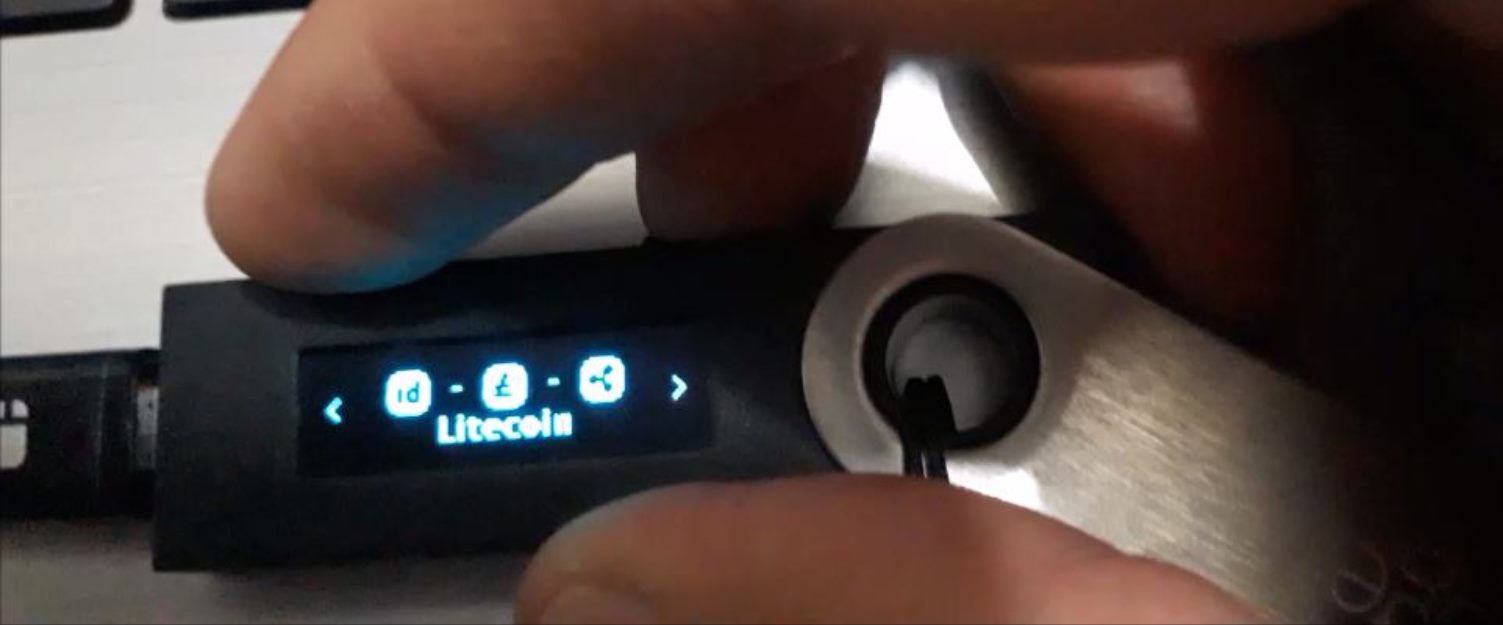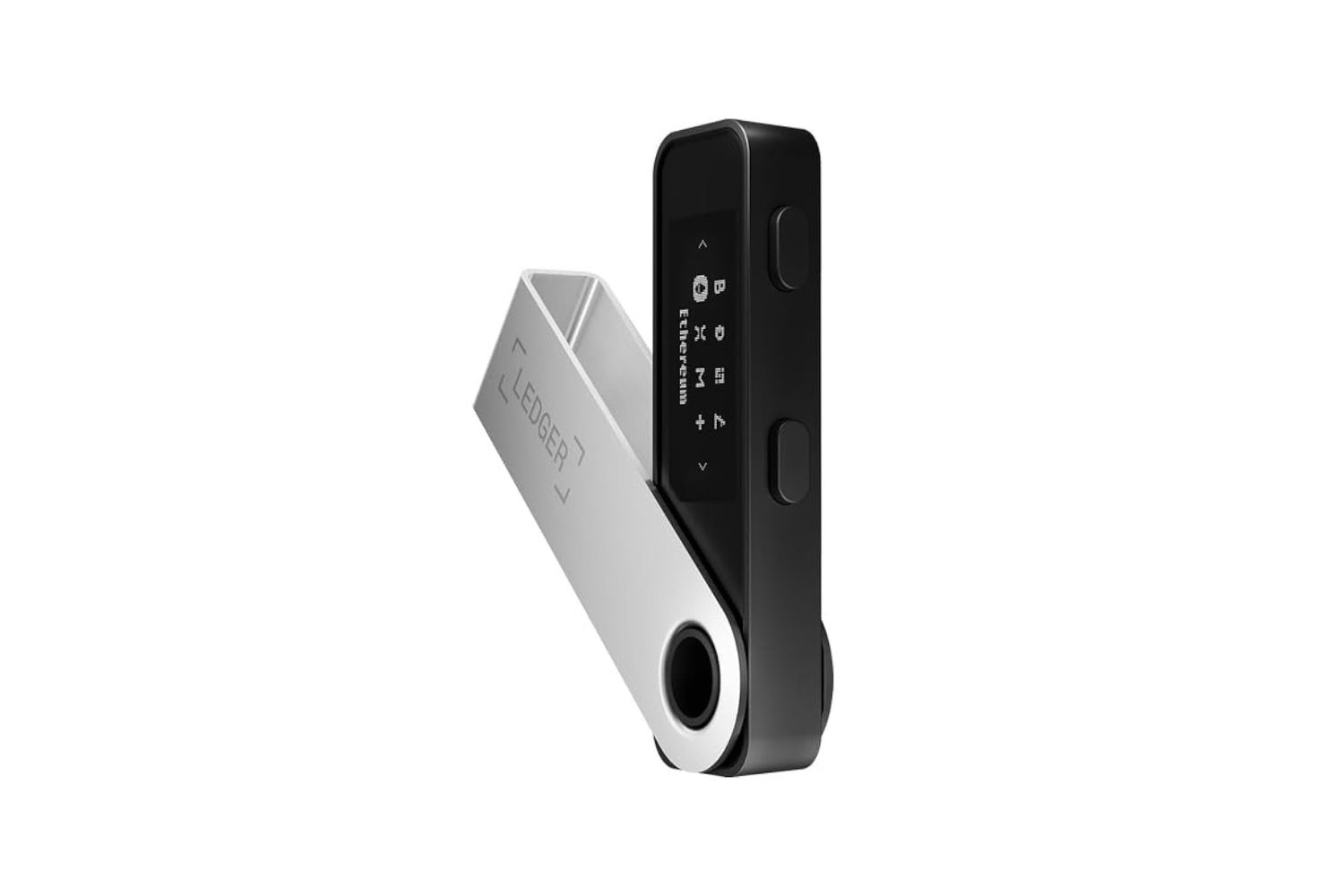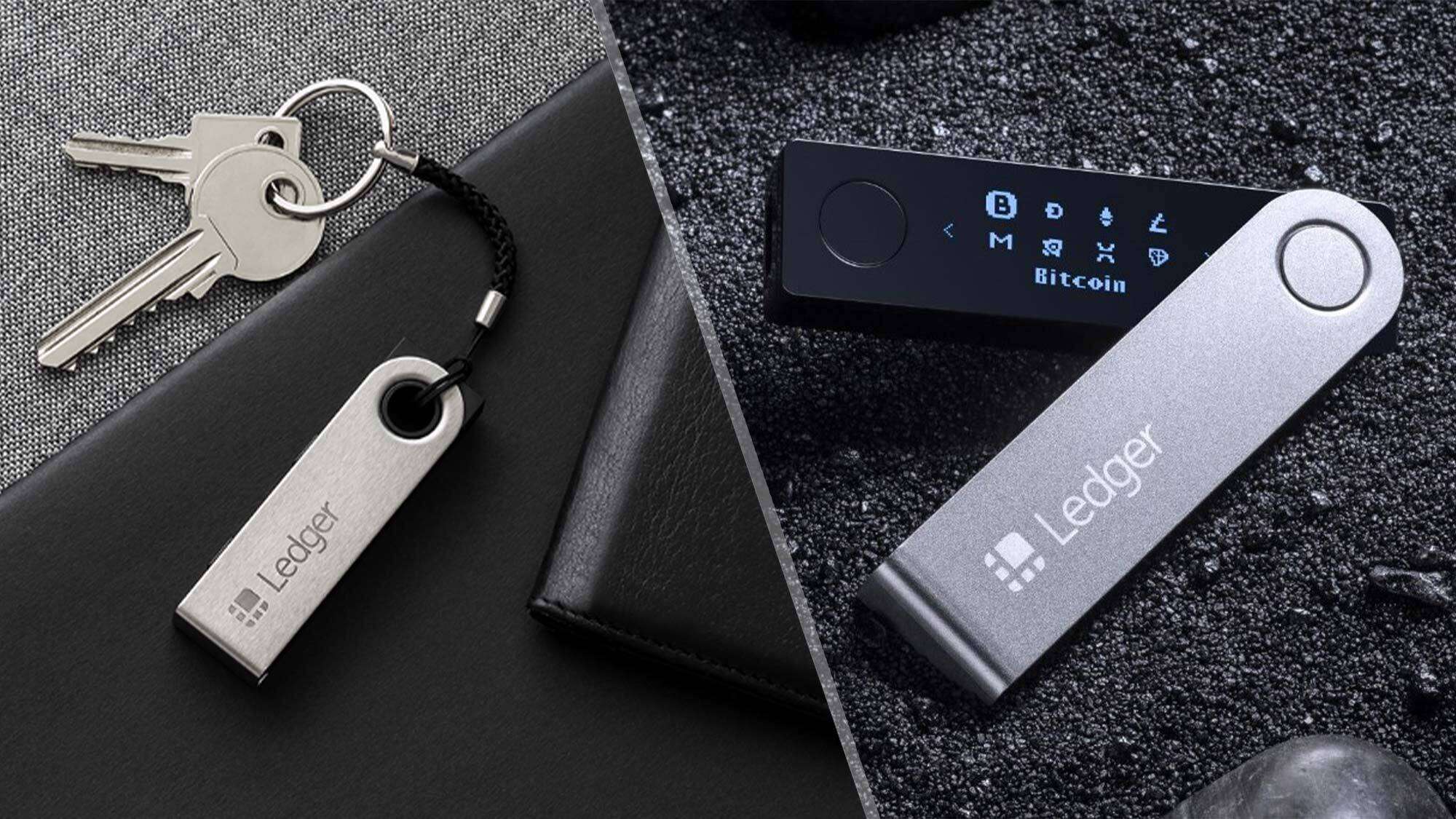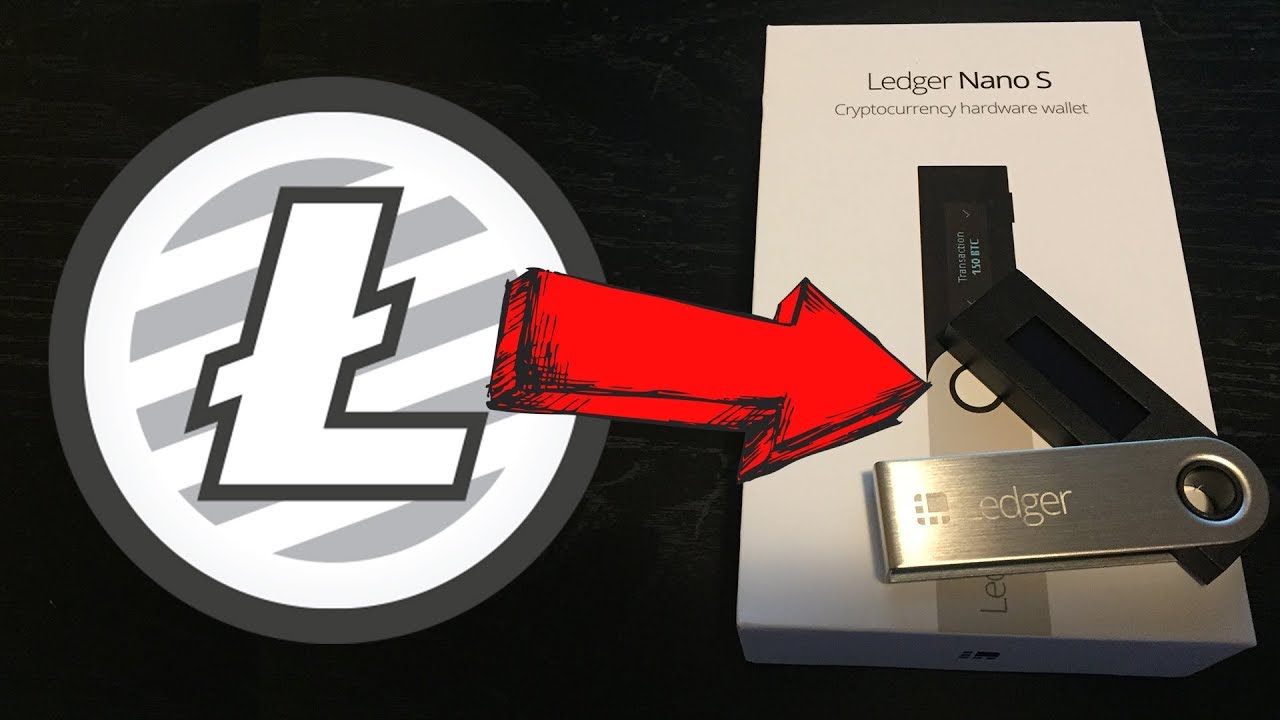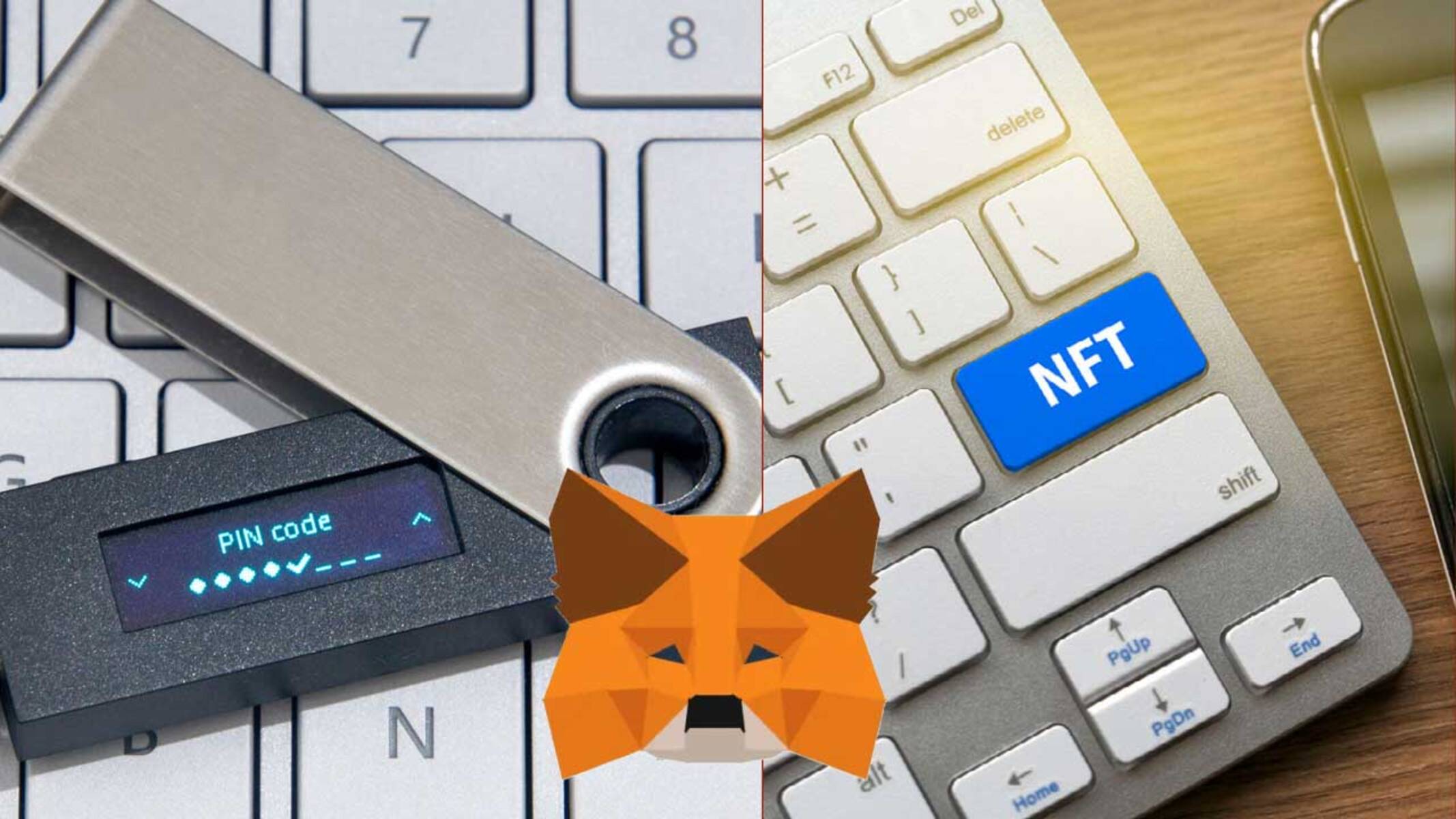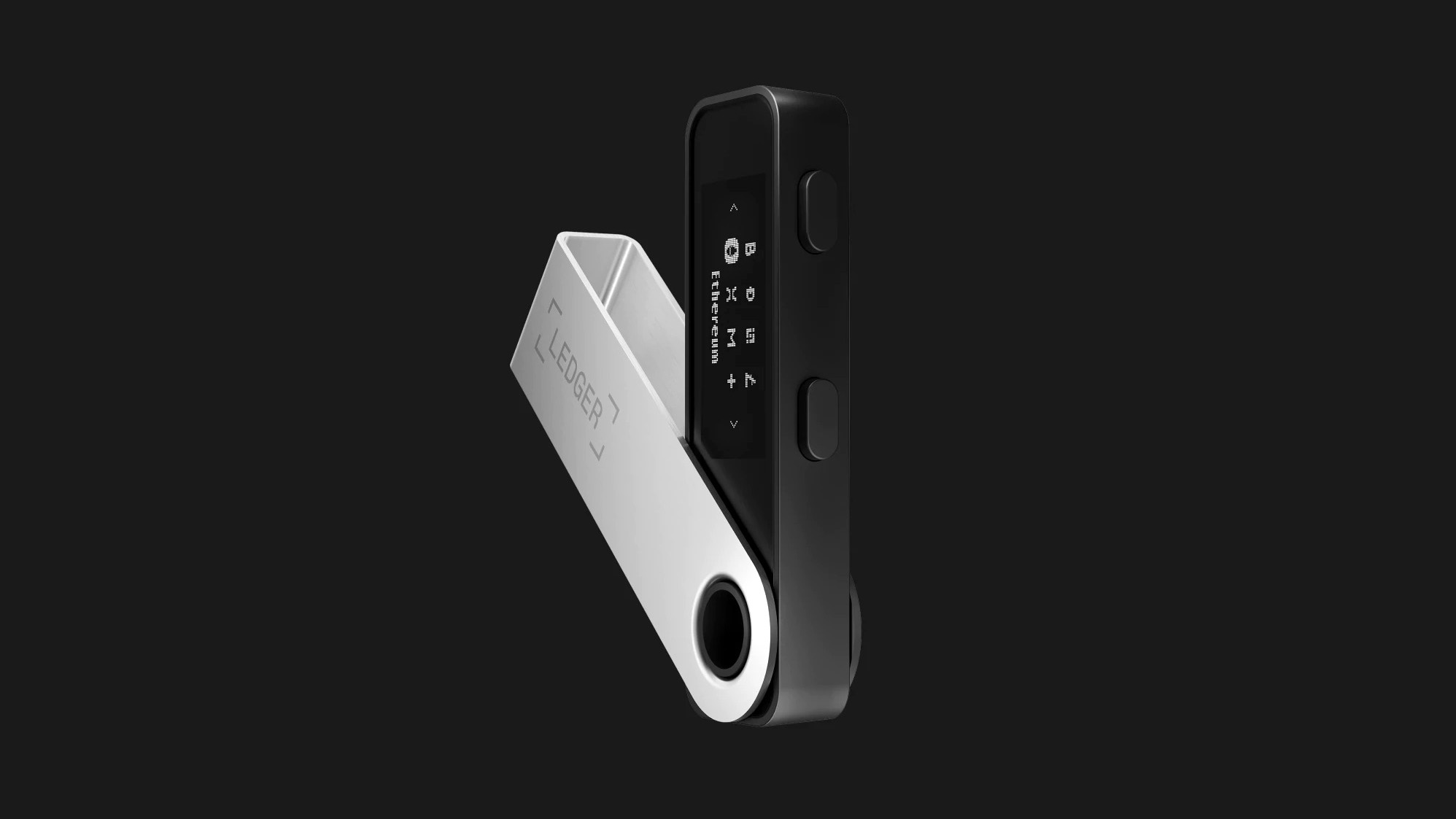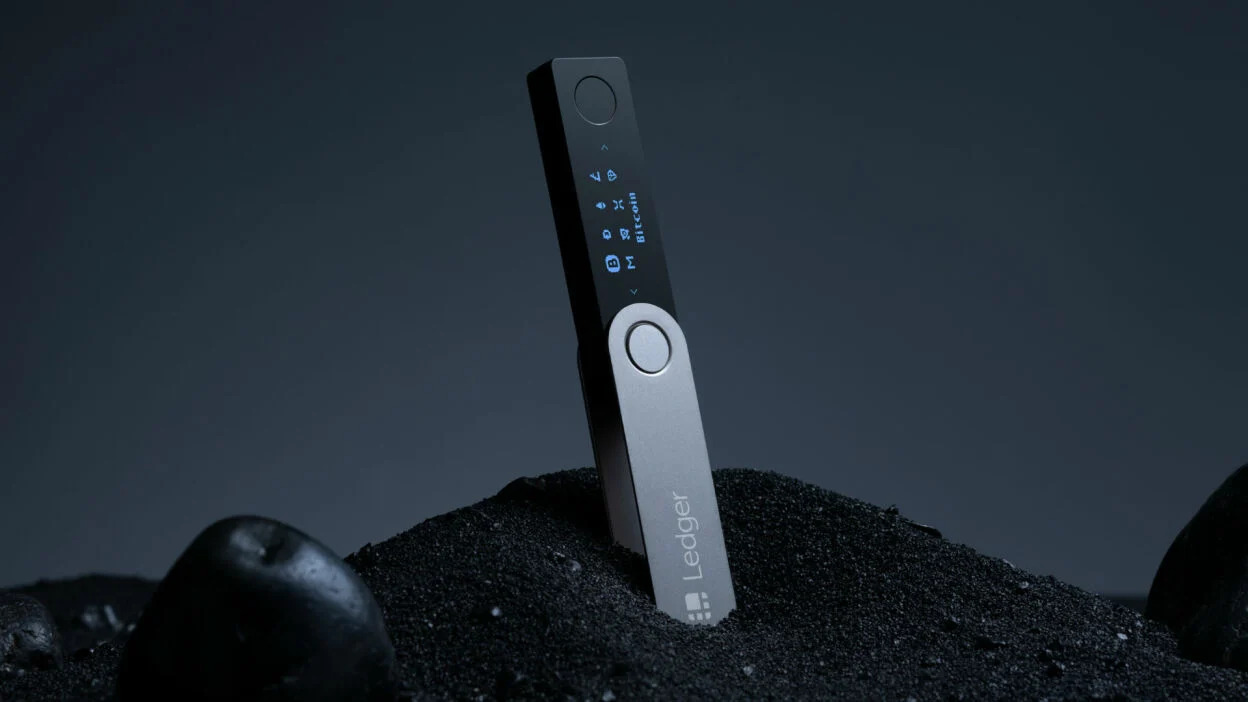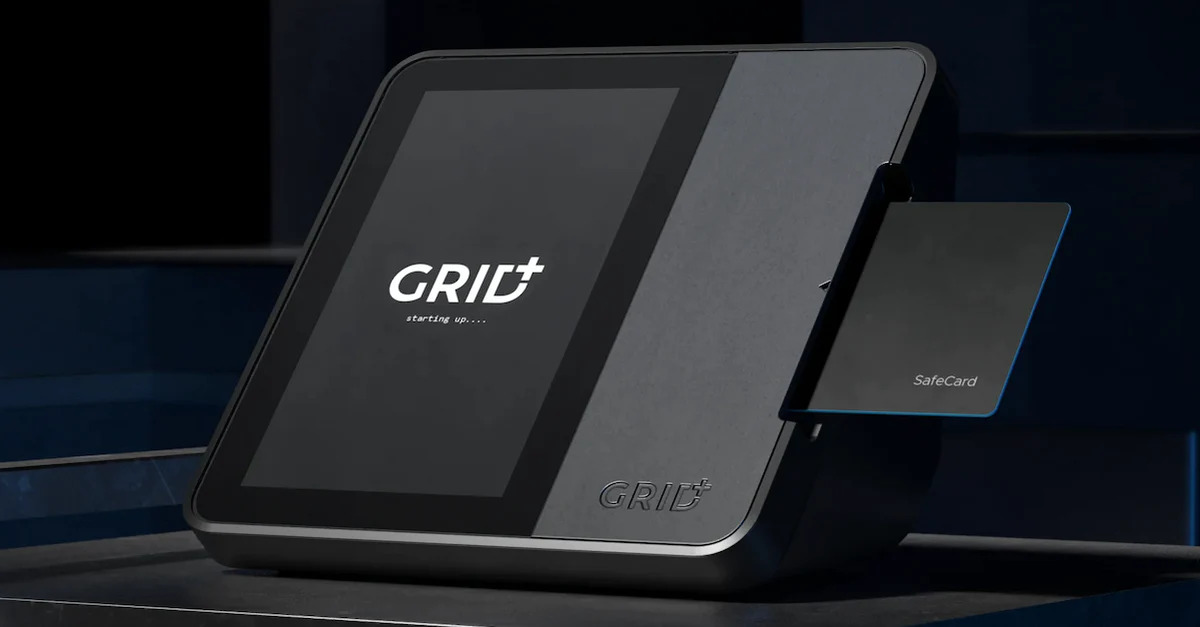What Are Hardware Wallets?
A hardware wallet is a type of cryptocurrency wallet that provides an extra layer of security for storing your digital assets. Unlike software wallets that are connected to the internet, hardware wallets are physical devices that store your private keys offline, making them highly resistant to hacking attempts and malware attacks.
Hardware wallets are designed to securely generate and store private keys, which are essential for signing cryptocurrency transactions. These devices utilize advanced encryption algorithms and secure elements to protect your private keys from being accessed by unauthorized individuals.
By keeping your private keys isolated from the internet, hardware wallets help safeguard your cryptocurrencies from potential threats such as phishing attacks, keyloggers, and remote hacking attempts. With a hardware wallet, you can have peace of mind knowing that your digital assets are stored in a secure offline environment.
These wallets come in various shapes and sizes, ranging from USB-like devices to mini-computers with screens, buttons, and onboard memory. One popular and reputable brand of hardware wallets is Ledger.
By using a hardware wallet like Ledger, you can have complete control over your cryptocurrencies while maintaining the utmost security. These devices are portable, easy to use, and compatible with multiple cryptocurrencies, making them a preferred choice for individuals who value both convenience and security.
What Is a Ledger Wallet?
A Ledger wallet is a type of hardware wallet that provides a secure and convenient way to store and manage your cryptocurrencies. Ledger is a well-known and trusted brand in the cryptocurrency industry, offering a range of hardware wallets designed to meet the needs of different users.
A Ledger wallet uses a combination of advanced security features and user-friendly interfaces to ensure the utmost protection of your digital assets. These wallets support various cryptocurrencies, including Bitcoin, Ethereum, Litecoin, and many more, allowing you to securely store a diverse portfolio of digital currencies.
One of the key features of a Ledger wallet is its secure chip technology, which stores your private keys and keeps them hidden from potential attackers. This means that even if the device is compromised or connected to a compromised computer, your private keys will remain secure.
In addition to storing your private keys, a Ledger wallet also allows you to securely manage your cryptocurrency transactions. You can easily send and receive cryptocurrencies, check your account balances, and monitor your transaction history through the user-friendly Ledger Live software.
Another benefit of using a Ledger wallet is its compatibility with popular cryptocurrency wallets and platforms. You can integrate your Ledger wallet with third-party wallets, such as MyEtherWallet, and access your funds directly from these platforms.
Furthermore, Ledger wallets are designed with the user’s convenience in mind. They feature intuitive interfaces, easy-to-navigate menus, and physical buttons for input confirmation, ensuring a user-friendly and streamlined experience.
Overall, a Ledger wallet offers the perfect combination of security, convenience, and compatibility. Whether you are a seasoned cryptocurrency trader or a beginner exploring the world of digital assets, a Ledger wallet can provide you with the peace of mind and control you need to manage your cryptocurrencies effectively.
How Do Ledger Hardware Wallets Work?
Ledger hardware wallets work by employing a combination of encryption, secure elements, and offline storage to keep your cryptocurrencies safe. Here’s an overview of how these devices function:
1. Secure Generation of Private Keys: When you set up your Ledger hardware wallet, it generates a unique set of private keys, which are created offline to ensure maximum security. These private keys are stored securely within the device’s secure element, making them inaccessible to any external threats.
2. Transaction Signing: Whenever you want to initiate a cryptocurrency transaction, the Ledger wallet prompts you to verify the details on its screen. Using the physical buttons on the device, you confirm the transaction, and the wallet securely signs the transaction with the stored private key.
3. Offline Storage of Private Keys: Your private keys are stored securely within the Ledger wallet’s secure element, which is separate from the device’s main processing unit. This isolation ensures that even if the device is connected to a compromised computer or network, your private keys remain protected.
4. Protection Against Malware and Phishing Attacks: Ledger wallets have built-in protection mechanisms to guard against malware and phishing attacks. The wallets verify the integrity of the device’s firmware during startup and display a lock icon to prevent tampering. Additionally, each transaction is verified on the device’s screen to ensure it matches the expected details.
5. Compatibility with Ledger Live: Ledger hardware wallets can be used in conjunction with the Ledger Live software, which provides a user-friendly interface for managing your cryptocurrencies. Through Ledger Live, you can access your account balances, view transaction history, and install or uninstall cryptocurrency apps on your device.
6. Backup and Recovery: Ledger wallets offer a backup and recovery mechanism to protect your funds even in the event of loss, damage, or theft of the device. The wallet provides you with a unique recovery phrase, often referred to as a “seed phrase,” which can be used to restore access to your funds on a new device.
By utilizing these innovative security measures, Ledger hardware wallets ensure that your private keys never leave the device in an exposed state. This significantly reduces the risks associated with online wallet storage and provides you with peace of mind knowing that your cryptocurrencies are stored safely.
Benefits of Using a Ledger Hardware Wallet
Using a Ledger hardware wallet offers numerous advantages for cryptocurrency users, particularly those who prioritize security and convenience. Here are some key benefits of using a Ledger hardware wallet:
1. Enhanced Security: Ledger wallets provide an extra layer of security by keeping your private keys offline, away from potential online threats such as hackers, malware, and phishing attacks. With the wallet’s secure chip technology and isolation of private keys, you can have peace of mind knowing that your digital assets are well protected.
2. Offline Storage: Unlike software wallets that store private keys on devices connected to the internet, Ledger hardware wallets keep your private keys offline. This significantly reduces the risk of unauthorized access to your cryptocurrencies. Even if your device is compromised or connected to a compromised computer, your private keys remain secure within the hardware wallet’s secure element.
3. Easy-to-Use Interface: Ledger hardware wallets offer a user-friendly interface, making them accessible to both novice and experienced cryptocurrency users. The devices feature intuitive menus, clear instructions, and physical buttons for confirming transactions, ensuring a straightforward and hassle-free user experience.
4. Wide Range of Supported Cryptocurrencies: Ledger wallets support a wide array of cryptocurrencies, including popular ones like Bitcoin, Ethereum, Litecoin, and more. This allows you to store and manage multiple cryptocurrencies in a single device, eliminating the need for multiple wallets and simplifying your crypto management.
5. Compatibility with Third-Party Wallets: Ledger wallets are compatible with various third-party wallets and platforms, allowing you to access your funds from different interfaces. You can integrate your Ledger wallet with wallets like MyEtherWallet, enabling you to manage your assets directly from these platforms.
6. Secure Transaction Verification: Ledger hardware wallets provide a secure way to verify and sign cryptocurrency transactions. The wallets display transaction details on their screens, and you can review and confirm the transaction using the physical buttons. This ensures that the transaction is accurate and that you have full control over your funds.
7. Backup and Recovery Options: Ledger wallets offer backup and recovery options to protect your funds in case of loss, theft, or damage to the device. You can create a recovery phrase, which can be used to restore your wallet on a new device if necessary. This provides an added layer of reassurance and ensures that you can always access your funds.
By utilizing the benefits of a Ledger hardware wallet, you can have a secure and user-friendly solution for managing and safeguarding your cryptocurrencies. Whether you are a casual hodler or an active trader, a Ledger hardware wallet can provide you with the peace of mind and control you need to securely navigate the world of cryptocurrencies.
What Cryptocurrencies Can Be Stored on a Ledger Wallet?
A Ledger wallet supports a wide range of cryptocurrencies, giving users the ability to securely store and manage various digital assets all in one place. Here are some of the cryptocurrencies that can be stored on a Ledger wallet:
1. Bitcoin (BTC): Being the first and most well-known cryptocurrency, Bitcoin is fully supported by Ledger wallets. You can store your Bitcoin securely and access it whenever you need to make transactions or check your balance.
2. Ethereum (ETH): Ledger wallets are also compatible with Ethereum, the second-largest cryptocurrency by market capitalization. You can store Ether and ERC-20 tokens on your Ledger device, allowing you to securely manage your Ethereum-based assets.
3. Ripple (XRP): The Ledger wallets support Ripple’s native cryptocurrency, XRP. You can store your XRP securely and confidently manage your Ripple holdings using your Ledger wallet.
4. Litecoin (LTC): As one of the early altcoins, Litecoin is widely supported by Ledger wallets. You can safely store and manage your LTC holdings, enjoying the benefits of both security and convenience offered by the Ledger device.
5. Bitcoin Cash (BCH): If you hold Bitcoin Cash in your portfolio, you can rest assured that it can be stored on a Ledger wallet. Ledger wallets provide a safe and reliable way to store and manage your Bitcoin Cash holdings.
6. Stellar (XLM): Ledger wallets also support Stellar Lumens (XLM). With a Ledger device, you can securely store your XLM and easily manage your Stellar assets.
7. Cardano (ADA): Cardano, an innovative blockchain platform, is compatible with Ledger wallets. You can store and manage your ADA tokens securely using your Ledger device.
These are just a few examples of the many cryptocurrencies that can be stored on a Ledger wallet. Ledger continually updates its wallet firmware and adds support for new cryptocurrencies, ensuring that users have access to a wide range of digital assets.
By having the ability to store multiple cryptocurrencies on a single device, Ledger wallet users can enjoy the convenience of managing their diverse crypto portfolio in one unified interface. This eliminates the need for multiple wallets and simplifies the management of your digital assets.
Setting Up Your Ledger Hardware Wallet
Setting up your Ledger hardware wallet is a straightforward process that ensures the security and proper functioning of your device. Here are the necessary steps to get your Ledger hardware wallet up and running:
1. Unboxing the Device: When you receive your Ledger hardware wallet, start by carefully unboxing the device. Make sure all the necessary components, including the device itself, USB cable, and any other accessories, are included.
2. Connecting to a Computer: Connect your Ledger hardware wallet to your computer using the provided USB cable. Ensure that the cable is securely plugged into both the device and the computer’s USB port.
3. Initializing the Device: Once the device is connected, you will see a welcome screen or prompt. Follow the instructions on the device’s screen to begin the initialization process. This usually involves setting a PIN code to secure access to your device.
4. Recording Your Recovery Phrase: Next, you will be prompted to write down your recovery phrase. This is a crucial step as it acts as a backup to restore your wallet if your device is lost, damaged, or stolen. Write down the recovery phrase on the provided card or a piece of paper and store it in a safe place.
5. Verifying the Recovery Phrase: After recording your recovery phrase, you will be asked to verify it. This ensures that you have accurately written down the phrase and have a valid backup in case of emergencies. Follow the instructions on the device to confirm the recovery phrase.
6. Installing the Ledger Live Software: To manage your cryptocurrencies and perform transactions, you’ll need to install the Ledger Live software. Download the software from the official Ledger website and follow the installation instructions on your computer.
7. Connecting the Device to Ledger Live: Once the Ledger Live software is installed, launch the application and connect your device to the computer. Ledger Live will prompt you to choose your device and complete the setup process.
8. Adding Cryptocurrencies to Your Device: With your Ledger hardware wallet set up and connected to Ledger Live, you can now add supported cryptocurrencies to your device. Choose the cryptocurrencies you want to manage and follow the on-screen instructions to install the corresponding wallets on your device.
9. Safely Storing Your Wallet: After completing the setup process, it’s important to keep your Ledger hardware wallet in a safe place. Store it in a secure location away from potential damage or unauthorized access. Remember to keep your recovery phrase separate from your device, ideally in a different physical location.
By following these steps, you will have successfully set up your Ledger hardware wallet and be ready to securely manage your cryptocurrencies. Always refer to the official Ledger documentation and resources for detailed instructions specific to your device model.
How to Use a Ledger Hardware Wallet
Using a Ledger hardware wallet is a simple and secure way to manage your cryptocurrencies. Once you have set up your device, here are the steps to effectively use your Ledger hardware wallet:
1. Connecting Your Ledger Wallet: Connect your Ledger hardware wallet to your computer using the provided USB cable. Make sure the device is securely connected to establish a connection.
2. Opening Ledger Live: Launch the Ledger Live application on your computer. If you haven’t installed it yet, download and install the software from the official Ledger website.
3. Unlocking Your Device: On your Ledger hardware wallet, enter your PIN code to unlock the device. Use the physical buttons on the device to input the PIN code accurately.
4. Navigating Ledger Live: Once your device is unlocked, navigate through the Ledger Live software to access the different features and wallets available on your device. You can view your balances, transaction history, and manage your cryptocurrencies from within the application.
5. Managing Cryptocurrencies: To manage your cryptocurrencies, select the corresponding wallet from the Ledger Live software. For example, if you want to manage Bitcoin, choose the Bitcoin wallet option. Ledger Live will display your account balance and provide options to send, receive, and view transaction details for that specific cryptocurrency.
6. Confirming Transactions: When you want to send cryptocurrencies, Ledger Live will guide you through the process. Verify the transaction details on your Ledger hardware wallet’s screen and confirm it using the physical buttons. This ensures that you have full control over your transactions and adds an extra layer of security.
7. Installing Additional Apps: If you want to manage other cryptocurrencies on your Ledger hardware wallet, you may need to install additional apps. Some cryptocurrencies have dedicated apps that need to be installed on your device through Ledger Live. Follow the instructions provided to install the desired cryptocurrency app.
8. Securing Your Wallet: When you’re done using your Ledger hardware wallet, it’s crucial to secure your device properly. Disconnect the USB cable and store your device in a safe place, away from potential damage or unauthorized access. Remember to keep your recovery phrase separate from your device and store it in a secure location.
By following these steps and using Ledger Live as your interface, you can effectively manage and secure your cryptocurrencies using your Ledger hardware wallet. Always refer to the official Ledger documentation and resources for any specific instructions or troubleshooting guides related to your device model.
Tips for Keeping Your Ledger Hardware Wallet Secure
Ensuring the security of your Ledger hardware wallet is of utmost importance to safeguard your cryptocurrencies. Here are some valuable tips to help you keep your device and digital assets secure:
1. Verify Device Authenticity: Only purchase your Ledger hardware wallet directly from the manufacturer or authorized resellers. Be wary of counterfeit devices that may compromise the security of your cryptocurrencies.
2. Keep Firmware Up to Date: Regularly check for firmware updates on the Ledger Live software and install them promptly. Firmware updates often include security enhancements and bug fixes, ensuring your device remains protected against potential vulnerabilities.
3. Use a Strong PIN Code: Choose a strong PIN code for your Ledger hardware wallet. Avoid using easily guessable codes and ensure your PIN is not related to personal information. A strong PIN adds an essential layer of protection against unauthorized access.
4. Enable Device Auto-Lock: Take advantage of the auto-lock feature available on Ledger hardware wallets. This setting locks the device after a certain period of inactivity, ensuring that even if the device is left unattended, it remains secure.
5. Protect Your Recovery Phrase: Your recovery phrase is the key to accessing your funds in case of loss or damage to your Ledger hardware wallet. Store it in a secure location, such as a fireproof safe or a bank safety deposit box. Avoid sharing your recovery phrase with anyone and never store it digitally or online.
6. Beware of Phishing Attempts: Be cautious of phishing attempts that aim to trick you into revealing sensitive information. Always double-check the website URL and be skeptical of any unexpected messages or requests for personal information. Ledger will never ask for your recovery phrase or personal information via email or direct message.
7. Be Mindful of Public Wi-Fi Networks: Avoid using your Ledger hardware wallet on public Wi-Fi networks, as they may be vulnerable to eavesdropping and man-in-the-middle attacks. Opt for secure and trusted networks to ensure your transactions and data remain confidential.
8. Consider a Passphrase: Ledger hardware wallets offer the option to enable a passphrase, also known as the “25th word.” This additional layer of security adds an extra word to your recovery phrase and provides an extra level of protection against unauthorized access.
9. Double-Check Addresses: Before confirming any transactions, carefully review the addresses you are sending your cryptocurrencies to. Malware can modify the destination address on your computer, potentially redirecting your funds to an attacker’s wallet. Always verify the address on your Ledger hardware wallet’s screen.
10. Regularly Backup Your Wallet: As you continue to manage your cryptocurrencies and make transactions, periodically create new backups of your wallet using the recovery phrase. This ensures that if any issues arise with your device, you can always restore your wallet onto a new Ledger hardware wallet.
By following these tips, you can significantly enhance the security of your Ledger hardware wallet and protect your valuable cryptocurrencies from potential threats. Keeping your wallet secure is an ongoing practice, so it’s important to stay vigilant and ensure you stay up to date with best practices and recommendations from Ledger.
Frequently Asked Questions About Ledger Hardware Wallets
Q: What is a hardware wallet?
A: A hardware wallet is a type of cryptocurrency wallet that securely stores your private keys offline. It is a physical device that provides an extra layer of security for managing your digital assets.
Q: What is the difference between a hardware wallet and a software wallet?
A: The main difference is that a hardware wallet stores your private keys offline, while a software wallet is typically connected to the internet. Hardware wallets offer enhanced security by keeping your keys isolated from potential online threats.
Q: Are Ledger hardware wallets compatible with multiple cryptocurrencies?
A: Yes, Ledger hardware wallets support various cryptocurrencies, including Bitcoin, Ethereum, Litecoin, Ripple, and many more. The wallets are compatible with a wide range of digital assets, allowing you to store and manage multiple cryptocurrencies in a single device.
Q: Can I use my Ledger hardware wallet with third-party wallets?
A: Yes, you can use your Ledger hardware wallet with compatible third-party wallets. For example, you can integrate your Ledger device with wallets like MyEtherWallet or MyCrypto to securely manage your Ethereum-based assets.
Q: How do I update the firmware on my Ledger hardware wallet?
A: To update the firmware, connect your Ledger device to your computer and open the Ledger Live software. The software will notify you if a firmware update is available and guide you through the update process.
Q: What happens if I lose my Ledger hardware wallet?
A: If you lose your Ledger hardware wallet, you can recover your wallet and funds using the recovery phrase that you previously set up. The recovery phrase acts as a backup and enables you to restore your wallet onto another Ledger hardware wallet or compatible wallets.
Q: Can I use my Ledger hardware wallet on multiple devices?
A: Yes, you can use your Ledger hardware wallet on multiple devices. The wallet’s functionality is not tied to a specific computer or device. You can connect your device to any computer with the Ledger Live software installed to manage your cryptocurrencies.
Q: How often should I backup my Ledger hardware wallet?
A: It is recommended to create a backup of your Ledger hardware wallet when you first set it up and every time you make significant changes, such as adding new cryptocurrencies or generating new addresses. Regular backups ensure that you can restore your wallet in case of device loss or damage.
Q: Are Ledger hardware wallets safe?
A: Yes, Ledger hardware wallets are designed with security as a top priority. They utilize advanced encryption algorithms and secure elements to protect your private keys. By keeping your keys offline, Ledger hardware wallets provide a secure environment for managing your cryptocurrencies.
Q: Where can I find additional support and resources for my Ledger hardware wallet?
A: The official Ledger website provides comprehensive documentation, guides, and support resources for Ledger hardware wallet users. You can also reach out to their customer support team for any specific queries or issues you may encounter.
These are just some frequently asked questions regarding Ledger hardware wallets. For more detailed information or specific inquiries, refer to the official Ledger documentation and resources.
Conclusion
Ledger hardware wallets provide a secure and convenient solution for managing and safeguarding your cryptocurrencies. With their offline storage, advanced encryption, and user-friendly interfaces, Ledger hardware wallets offer peace of mind and control over your digital assets.
Throughout this article, we explored the various aspects of Ledger hardware wallets. We discussed what they are and how they work, highlighting their enhanced security features and offline storage of private keys. We also explored the benefits of using a Ledger hardware wallet, including wide compatibility with different cryptocurrencies and user-friendly interfaces.
Additionally, we provided guidance on how to set up and use a Ledger hardware wallet effectively, emphasizing the importance of verifying device authenticity, keeping firmware up to date, and safeguarding your recovery phrase. We also addressed frequently asked questions to address common concerns and provide further clarity on Ledger hardware wallets.
By following the tips for keeping your Ledger hardware wallet secure, you can ensure the utmost protection of your digital assets. It’s crucial to stay vigilant, be mindful of potential threats, and regularly update your security measures to stay one step ahead.
Overall, Ledger hardware wallets offer a robust solution for individuals seeking a secure and reliable method to store and manage their cryptocurrencies. Remember to consult official Ledger documentation and resources for specific instructions regarding your device model to maximize security and convenience.







